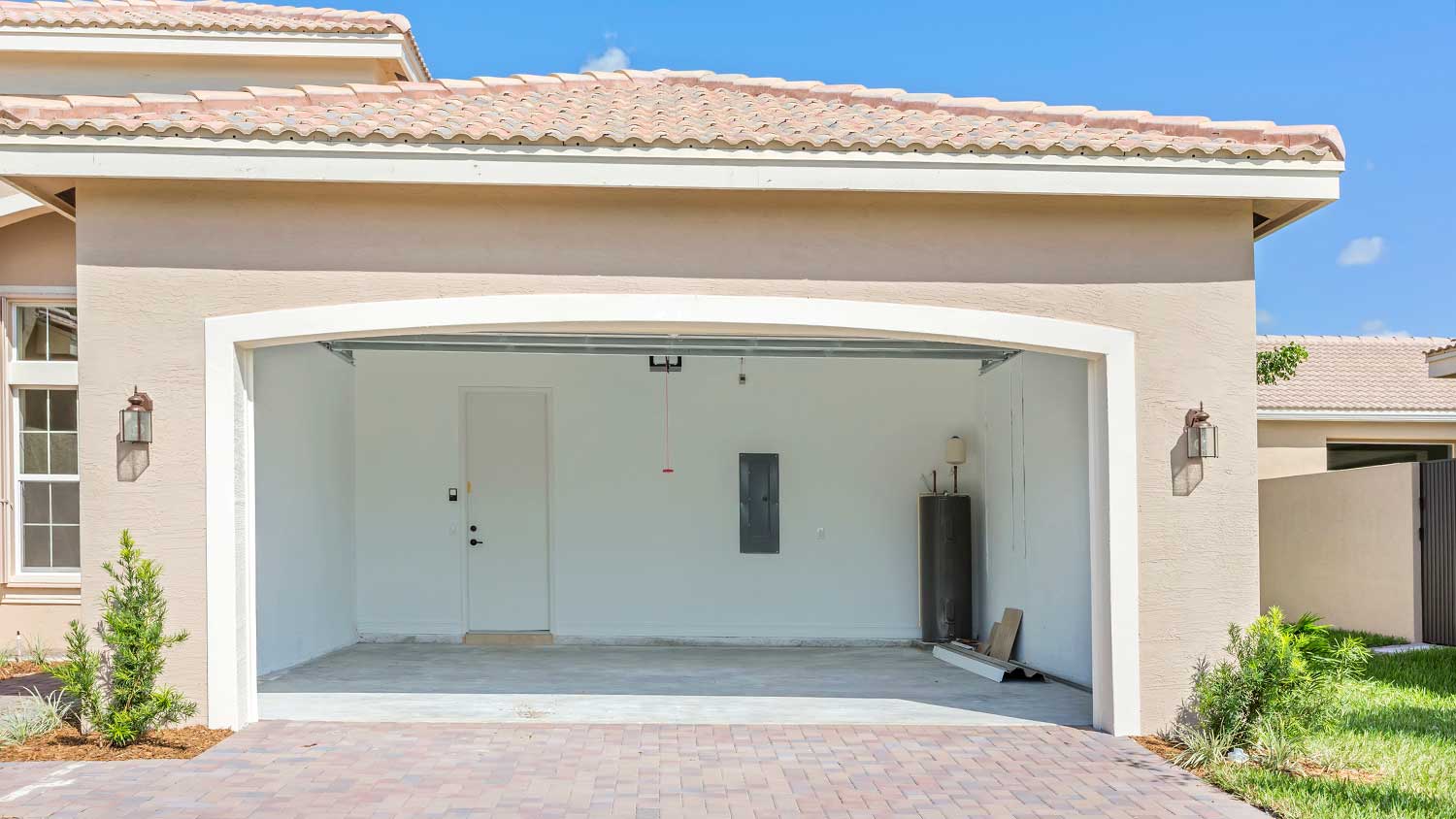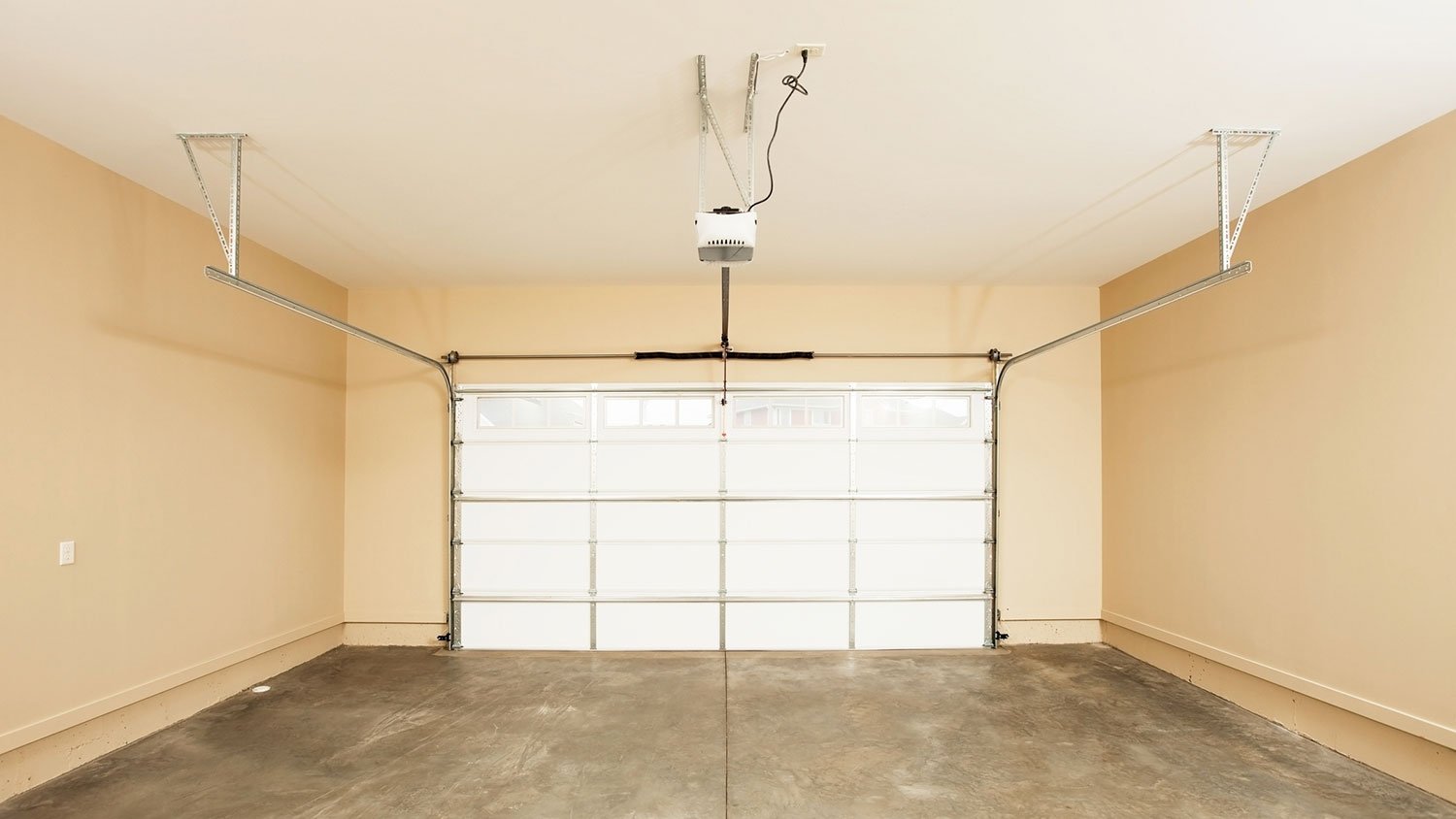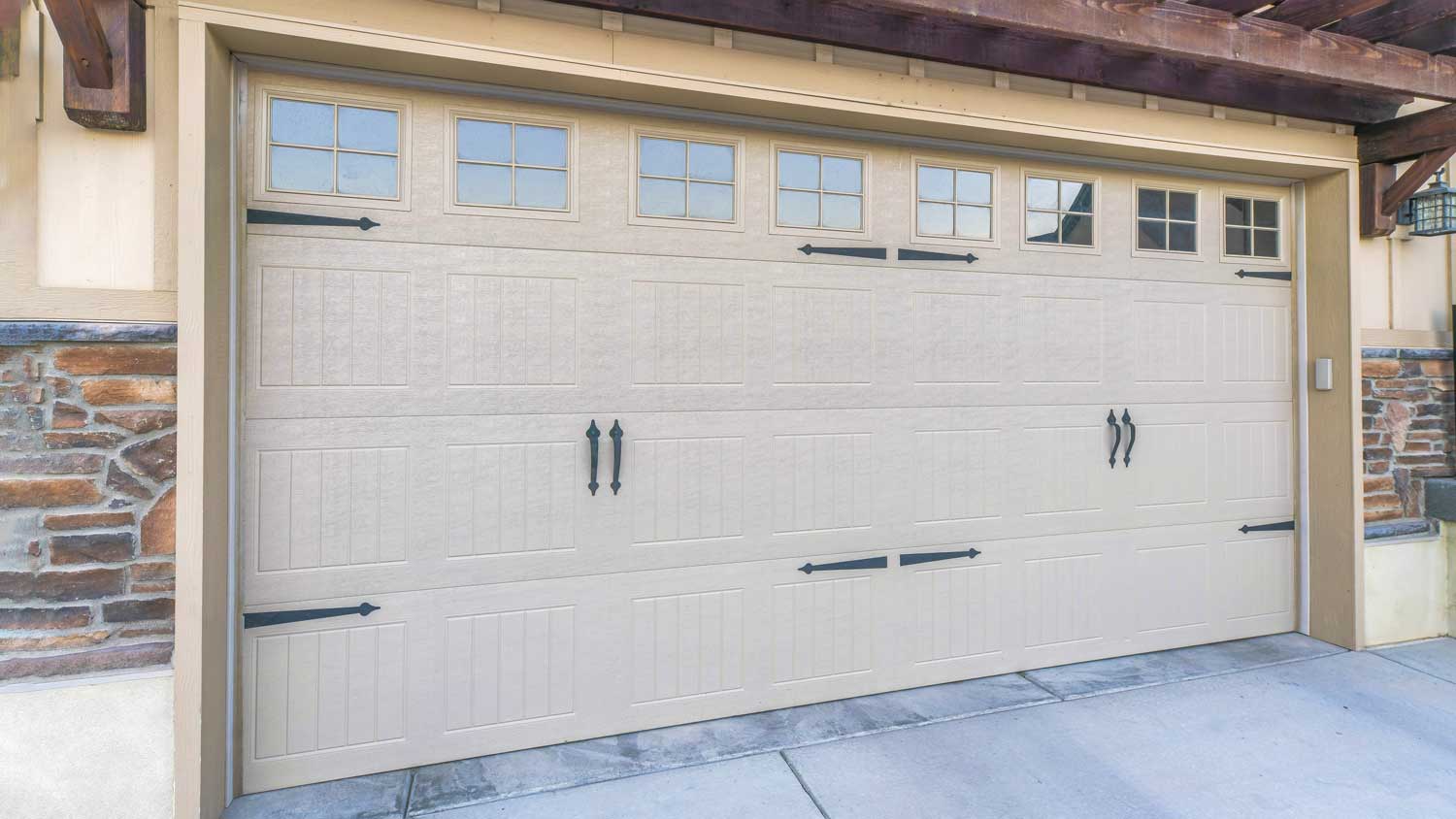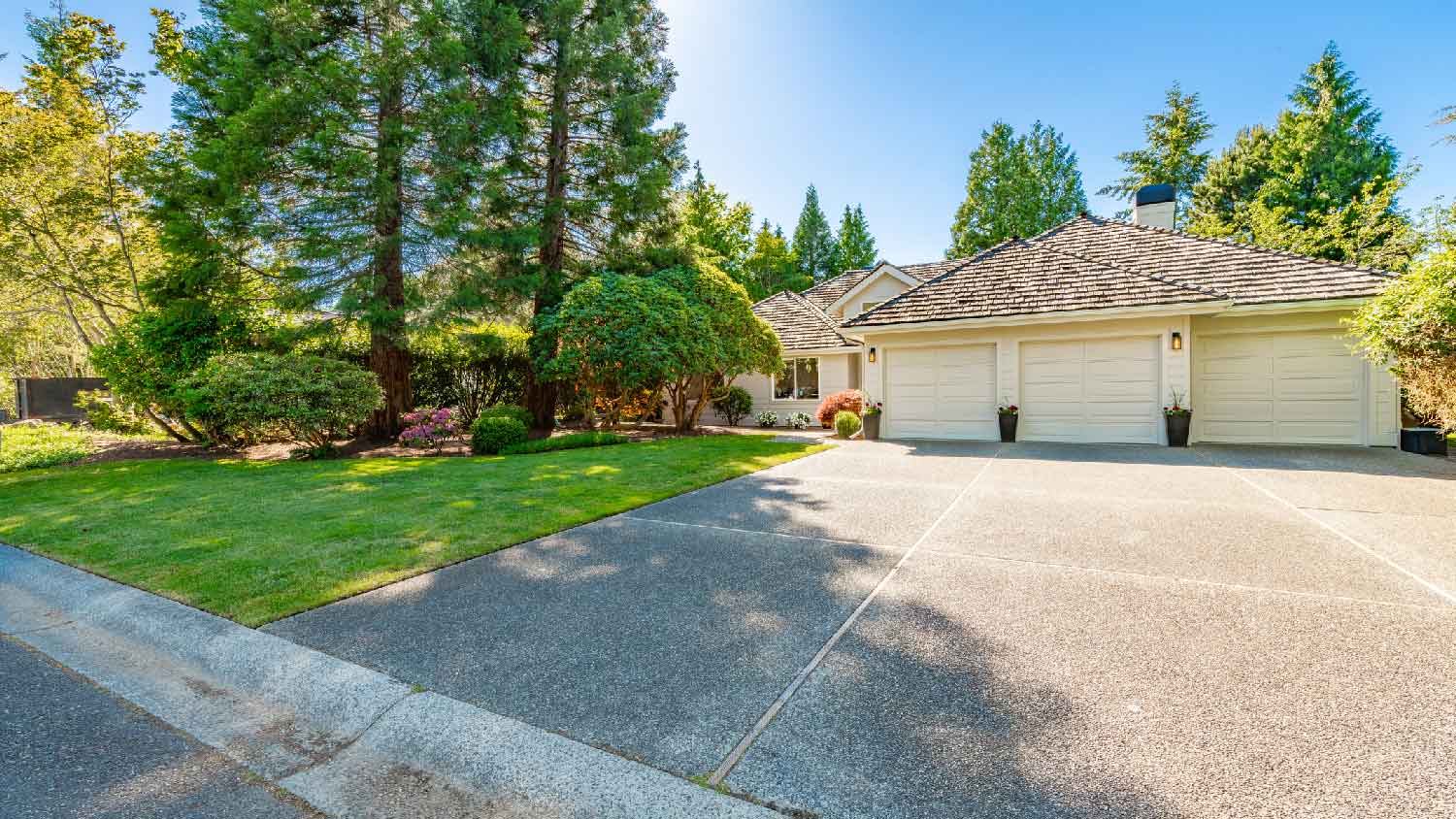10 Garage Door Problems and How to Fix Them
Garage door problems got you stuck? Read on


Common problems include a garage door that won’t close, won’t stay shut, or opens by itself.
To start troubleshooting, make sure your automatic door has working batteries and nothing is blocking the sensors.
It’s best to call a professional garage door company instead of trying to fix the problem yourself.
Garage door repairs cost $260 on average.
If your home has a garage, there’s a chance that sooner or later, your garage door will fail and you won’t be able to open or close it. While it’s a frustrating problem, there are things you can do if your garage door stops working. Here are five common garage door problems and what to do to get it working properly again.
1. Garage Door Won’t Close
When your garage door won’t close, multiple items could be causing the issue. Start the diagnosis by making sure your automatic garage door opener has power.
Solution
Take a look at the hardware. If something is blocking the rollers in the tracks along the edges, move it out of the way. If the tracks are bent, you should call a local garage door repair pro to fix the issue.
The springs above the garage door may be malfunctioning. These springs may wear out as they age or have significant rust or grime on them. The springs carry significant tension, so you shouldn’t try to fix them yourself. If they suddenly release the tension, you could suffer severe injuries. A garage door spring replacement costs about $250.
Look at the release handle that connects the automatic opener’s chain drive to the door. If someone has pulled the release handle, the automatic opener will not work. With the release handle loose, you can attempt to close the door manually. If the door won’t move manually, you could have an issue with the rollers or springs. If it does move manually, reconnect the release handle and try the automatic opener again.
2. Garage Door Won’t Stay Closed
If you’ve ruled out the possibility that you just pushed the button on the garage door opener twice (or someone else in your house is playing a trick on you), it might mean there’s a problem with your garage door’s logic board when your garage door won’t stay closed.
Solution
The logic board is a sophisticated component that makes a garage door function, so you’ll definitely want to contact a garage professional to take a look at it vs. tinkering with it yourself.
Stand outside the door and create a shadow to block the sun from shining on the sensor’s lens. If your garage door keeps going back up, the sun’s current angle to the lenses could be interfering with the sensors, causing them to register an error.
3. Garage Door Is Opening By Itself

It can be a little unsettling if your garage door opens by itself. Don’t worry, your house isn’t haunted—but it could indicate one of these issues:
Overlapping signals
Blocked safety sensors
Stuck control buttons
Incorrect setting limits
Circuit board malfunction
Solution
Luckily, the fix for most of these problems involves either tweaking your garage door opener’s settings or buying a new garage opener to replace the one you have.
4. Garage Door Opener Remote Won’t Work
If your garage door won’t open with the remote, it could mean the opener is broken and needs replacing. However, there are a few other causes:
Faulty keypad
Frayed wiring
Blocked or misaligned photo eye
Unaligned or obstructed tracks
Broken springs
Solution
If your garage door opener uses batteries, be sure to double-check that the batteries aren’t dead or go ahead and replace them with new ones to see if that solves the problem.
5. Garage Door Is Partially Open and Crooked
If the door is partially open and crooked, don’t touch it. It’s a sign your door is off balance, and it’s caused by a problematic cable.
With a garage door stuck in place like this, it’s likely the door is still under tension from the spring, and one false move could send a 200-pound door crashing down, causing damage or injury.
Solution
A crooked garage door is a sign that your garage door is broken and you need to call in the professionals to fix or replace it.
6. Garage Door Is Closed and Won’t Open

If the garage door won’t open with the automatic opener, it’s possible to still raise it.
Solution
Look for the red emergency release rope hanging from the door's track. Pulling it enables you to manually release the door from the automatic opener. Then try to lift the door. However, you don’t want to keep pulling if it feels like you’re having to force it in either direction. Instead, wait until a garage repair pro can come to your aid.
You can also use the emergency release rope to free a door if it gets stuck in the open position, but be careful about pulling it shut because it could slam.
Another safe and convenient solution is to install a battery backup system, which allows you to open and close the door even if you lose power in your home.
Most garage doors have an emergency cord you can pull when you lose power. The cord is located above you, where the track leads to the motor. Once you pull this cord, you can open your door manually. For safety reasons, it's important you only pull this cord when the garage door is closed.
7. Garage Door Opens a Little but Stops
If your garage door opens a little then stops, you may have a hardware problem. The springs and cables that create the tension to raise and close the garage door may be malfunctioning.
It’s also possible that the track and the door’s rollers are out of alignment or may have an obstruction that is blocking the door from fully opening. Sometimes, the track may have frozen water in it that blocks the rollers.
Solution
Remove any obstacles, if you can do so safely. If your automatic opener seems to be running in an odd manner by creating excess vibration while straining to lift the weight of the door before stopping completely, you may have malfunctioning opener hardware.
Another potential problem with the automatic opener is the force limit setting on the unit. If its setting is too low, it won’t create the power needed to fully open the door, stopping part way. Each system is a little different, so read the user manual or call a garage door repair professional to help check and adjust this setting.
8. Garage Door Won’t Open but the Motor Is Running
When your automatic garage door’s not opening but the motor’s running, you may have damage on one of the parts of the automatic opener. Look at the trolly carriage to see if it’s moving. Is the chain moving? If the running motor is not moving any of the parts of the automatic opener system, something in the system is likely broken.
It’s also possible that someone pulled the release handle on the automatic opener system. This disconnects the system from the actual garage door, meaning the motor can run and move the trolley, but it has no connection to the door, so nothing happens.
Solution
Check whether the release handle is loose and reset it if someone pulled it without your knowledge. If the circuit board inside the opener hardware is malfunctioning, it may allow the motor to sound like it’s running, but it isn’t generating any power to open the door. If you have to replace a garage door opener, expect to pay around $400.
9. Garage Door Opens and Closes Too Slow
Another common issue is the automatic garage door opener moving the door far more slowly than you expect.
Solution
Try a few maintenance actions to fix the issue:
Add lubricant to the rollers and along the track.
Add lubricant to the chain and trolley.
Add lubricant to the hinges on the door.
Tighten any loose bolts that hold the door’s tracks together.
Check the springs and tension wires for fraying or obvious wear.
Adjust the speed setting on the automatic opener.
Wait until the garage warms up after a cold night, as extremely low temperatures could affect the performance of the garage door system.
If none of these actions speed up the door’s movement, you should contact a garage door repair company. It’s possible one of the components of the door is near the end of its life span and needs replacing.
Having a garage door repair company perform maintenance on the garage door opener, which costs $100 to $200, can catch problems before the door begins to operate slowly.
If it’s a new opener or if you just moved into the house, it’s possible that your garage door opener doesn’t have enough horsepower to handle the weight of the door, causing it to rise and drop slowly.
10. Garage Door Is Too Loud
When the automatic garage door mechanism is malfunctioning, it often makes awful noises, like grinding, squealing, rumbling, and banging. If you’re wondering how to make a garage door quieter, start by inspecting the various pieces of hardware.
Solution
Listen carefully as the door moves up and down and see if you can pinpoint the source of the noise. If you have loose nuts and bolts on the door or tracks, this can cause quite a bit of vibration and noise as the door moves. Rollers on the door that are losing their shape can create squealing sounds, too.
A failing motor inside the automatic garage door opener could make loud grinding and banging noises. A loose chain on the opening system may bang around.
As the torsion springs on the door begin to wear out, they will make loud squealing noises. If the door’s noise level suddenly or gradually becomes far louder, you should reach out to a repair professional for help, especially if you suspect the noise is coming from the springs, which are dangerous for you to work on yourself.
Fixing a Garage Door Yourself vs. Hiring a Pro
Depending on the situation, there’s a chance you could temporarily fix your garage door problem until professional help arrives. Because the average garage door repair cost is about $260, it’s understandably tempting to try to fix the issue yourself.
However, it is safest to hire a garage professional to do the work. The various metal parts on the door can be sharp and may carry quite a bit of tension, especially the springs. You could severely injure yourself if a tight spring lets go at just the wrong time. The door itself is heavy, too, creating danger if it suddenly loses tension and falls.
Additionally, if you misdiagnose the problem with the door, the steps you take may not actually fix the problem, leaving you with a bigger repair bill—or a total replacement bill—soon after.
A garage professional who fixes garage doors can diagnose the problem and give you advice on whether repair or replacement is the better choice. Garage door repairs can be tricky if you’re not sure what to do, especially if fixing it involves heavy lifting or inspecting electrical components.
If you want to do something yourself to save some money, focus on doing regular maintenance, like adding lubrication and tightening loose parts. Such actions can lengthen the life span of your garage door system, meaning you can put off needing to call for repairs, saving money over the long run.
Frequently Asked Questions
If your garage door isn’t opening or closing properly, the problem could stem from misaligned sensors, broken springs, track obstructions, or a malfunctioning opener. Safety sensors are a common culprit—if they’re dirty or misaligned, the door won’t close. Worn-out springs or cables, as well as track damage or debris can cause it to get stuck. If the opener is unresponsive or erratic, the issue might be electrical, requiring a reset or component replacement.
Start by checking the basics: Ensure the opener is plugged in, the circuit breaker isn’t tripped, and the remote has fresh batteries. If the opener runs but the door doesn’t move, the issue could be with the motor, drive gear, or limit settings. If the door reverses unexpectedly, misaligned safety sensors or a sensitivity issue could be to blame. Grinding noises usually indicate worn-out gears, while a completely unresponsive opener might have a wiring or logic board failure.
Broken garage door springs are the most common repair since they take the most wear and tear. Springs counterbalance the door’s weight, and when they snap, the door won’t open properly or at all. Torsion springs last around 10,000 cycles, but once they wear out, they need to be replaced by a professional since they’re under high tension and can be dangerous to handle.















